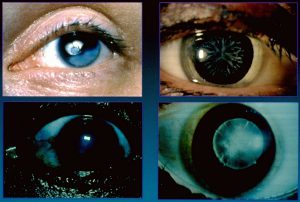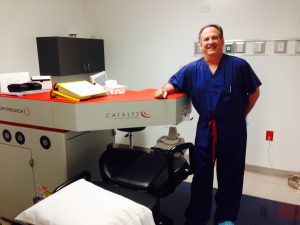Cataract surgery
As we age, the lens inside your eye becomes increasing cloudy, affecting one's vision.

Various cataracts
Symptoms include blurry vision, glare issues and decrease night vision. Theses symptoms can impair driving and cause trouble with reading and watching tv.
Luckily cataract surgery has come a long way. In the 60's and 70's , one was hospitalized for a week without allowing any movement. Then were left with wearing very heavy and thick glasses. In the 70's-80's intraocular lens where being developed allowing for reduction in the thickness of the post op glasses. The 90's and 00's saw development of improved techniques allowing less time for hospitalization. In the early 10's we saw the advent of new intraocular lens that improved visual performance for distance and near work.
Today's cataract surgery is a giant leap from the early 60's, as we now have lasers that assist with cataract surgery and the procedure is an out patient procedure, requiring minimal time away from your everyday routine. The Catalyst femtosecond laser is assisting cataract surgeons like Dr. Rubin by making precise incisions, and aiding in correcting patients astigmatism. Also new developments in the designs of intraocular lens include the new extended depth of focus lens that allow a larger range of vision options than previous lens.

Dr. Jay Rubin with Catalyst - Eye Clinics of South Texas (San Antonio)
